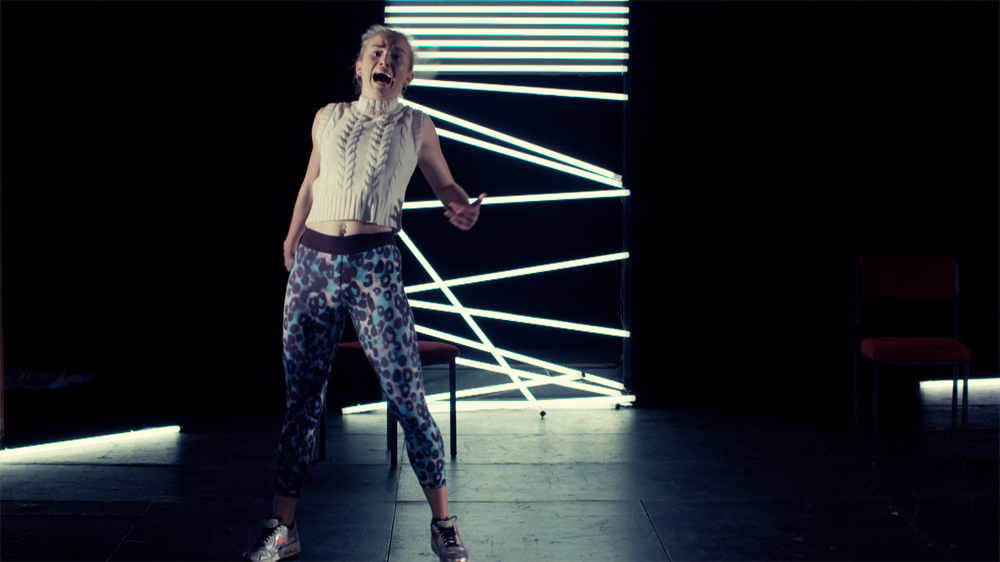Hot on the heels of the new Digital Theatre+ platform release featured in last month’s InkPellet (see bit.ly/IP112Nov16), we asked Matthew Nichols (Director of Drama, Manchester Grammar School and Chief Examiner of GCSE Drama, AQA) to take us through his ideal playlist on DT+, as a guide for drama teachers looking to use digital resources to support the teaching of design skills in the classroom
You’re teaching the new GCSE or A Level specifications, and have to cover design skills with your students. Don’t have any practical theatre design experience of your own? Worried about finding resources to support your students? Relax. Help is at hand.
Most qualified and experienced drama teachers feel that they lack the experience in this area to be able to guide their students through the specification. Whilst you don’t have to offer an immersive crash course in all of the different design skills on offer, your students do need to have a fundamental grasp of theatre design; what it is, how it serves a text, and how it can be used to help communicate meaning. For actors, gaining a practical understanding of their chosen text, it’s relatively simple. You can pick up the scripts and start to explore. For designers, however, this is a bit trickier. Fortunately, the wealth of resources on offer on DT+ help teachers bring theatrical design to life, through examples of high quality filmed performances, interviews, photographs and a wealth of resources. Accessible, rigorous and rooted in contemporary practice, the resources below suit a range of learning styles and will be invaluable for students.
Into The Woods (2010)
Show your students the opening number, and lead them through a discussion about how a designer has used this outdoor space, with lots of levels, bold colours and quirky decisions to introduce all the main characters of the production. What are the most striking features here?
Talking About Plays: Metamorphosis with George Dillon
This is a really interesting dissection of the visually distinctive work of Steven Berkoff, and his work on Kafka’s masterpiece. Highlight the useful moments for your students, and get them to consider Berkoff’s idea of ‘total theatre,’ integrating striking design choices with powerful, non-naturalistic acting.
Hamlet (2014)
There are two key moments here that will get students thinking. Show them the scene where Hamlet meets the ghost of his father, and lead a discussion on this. How does the in-the-round presentation affect what the designers (and actors) do? How has sound and light been used simply and imaginatively in this sequence?
Ghosts (2014)
Richard Eyre’s updating of Ibsen’s masterpiece is a fantastic opportunity for students to look at detailed naturalism in design. Show them the moment of Oswald’s arrival, and also the last scene of the play. How are set, costume and lighting used to create a sense of place, location, class, mood, and time of day?
Practitioners On Practice: Bob Crowley On Design
This is a treasure trove of inspiration for students (and teachers!) as the celebrated Bob Crowley talks through his ideas about theatrical design, and how he approaches his work. For anyone unsure of what a designer actually does, this is a fantastic place to start.
Iphigenia In Splott (2016)
A bold, energetic theatrical monologue, this is worth showing to students to consider how much can be achieved through simple (but bold) choices in lighting and sound design, all within a ‘minimalist’ aesthetic. Much of what is achieved here could easily be achieved in most basically-equipped drama studios.
Practitioners On Practice: Mic Pool On Sound And Video Design
This is a fascinating look into how design skills have really evolved and developed over the last two decades, with a focus on pioneering ideas in sound and video design. With most students in possession of a smartphone, they will be easily able to try out Mic Pool’s ideas in their own work.
Over There (2009)
Mark Ravenhill’s surreal play takes place in one (or perhaps many) location. Show the students any extract from this and look at how the designer has made distinct decisions about colour and how this use of colour can be deployed symbolically. Your students could consider how colour and symbolism could be incorporated into their own work.
Beautiful Thing (2012) Study Pack
This informative companion piece to the production – also available – is an accessible introduction to the themes and ideas in the play. Look at the Image Galllery here. Each of these photographs could be discussed and analysed in detail to look at how the design of set, costume and props brings the world of the play to life.
Billy The Kid (2011)
Finally, a delightful short play from the author of War Horse. This is a useful and accessible glimpse into how designers can create exterior locations and settings on stage, and use light, colour and costume to suggest period and setting.
To find out more about Digital Theatre+ visit digitaltheatreplus.com/inkpellet



